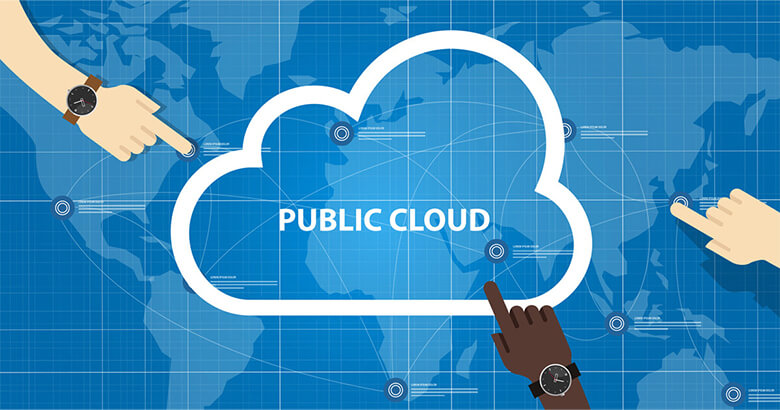How to achieve rapid hybrid integration for public cloud

Services-based delivery of cloud applications and infrastructures have fundamentally changed how businesses operate and interconnect. Businesses can now find services at the click of a button that would have taken months to integrate or years to develop in the past. By connecting existing architectures to public cloud services, businesses can grow to meet rising demands, adopt new features quickly, and expand globally faster than ever before.
However, I’ve found that hybrid cloud adoption comes with its share of challenges. Established businesses rely on legacy code for business-critical operations. And even if they had the time to rearchitect monolithic applications, development teams might lack the skills or experience to be successful without significant training. The public cloud promises agility, flexibility, greater functionality and lower capital expenses. However, reaching peak productivity in the cloud often requires a hybrid approach, especially for established businesses.
The appeal of the public cloud
Traditional IT architectures and application platforms require a lot of setup, tuning and ongoing maintenance. Running your applications in the public cloud means you use systems and services, but the cloud provider handles all the underlying work that makes everything run. For example, if you migrate a database to the cloud, you no longer have to worry about replication, patching, monitoring, disaster recovery or availability. You simply point your applications to the new instance, and you’ve effectively freed a portion of your staff to focus on strategic initiatives rather than database management.
Really, it all comes down to cost. Maintaining on-prem IT systems is a capital expense (CapEx); cloud is operational (OpEx). With the cloud, you have lower up-front costs, and you’re charged based on usage. By using resources in the public cloud, you have access to modern architectures, turn-key services, and more that all grow in line with your needs and budget.

Hybrid integration: Cloud native or cloud ready?
There is a push from leadership across nearly every industry to become cloud native. Cloud-native enterprises benefit from more than the elasticity and availability of cloud hardware. They enjoy greater levels of connectivity, disaster recovery, security, high availability, and an ever-evolving and growing portfolio of turn-key cloud services.
I think becoming cloud-native is a worthy goal, but for established businesses that rely on legacy architecture, cloud nativity doesn’t happen without a lot of work. Cloud-first development, adoption of microservices architectures and containerized development, widespread cloud orchestration, and integration with feature-rich cloud services all take time and resources to develop. In my experience, becoming cloud-first is also a culture change and can require significant upskilling of resources at every level.
The alternative for established enterprises is to become cloud ready through hybrid integration. A cloud-ready business still relies on established, on-prem infrastructure, applications and workflows while opening to cloud features and services where it makes sense. A cloud-ready enterprise is hybrid by nature, relying on agile orchestration frameworks so they can gain the benefits of a cloud-native enterprise without significant rework or reskilling. With the right orchestration framework, you can:
- Lift and shift legacy systems using cloud connectors for a partner ecosystem or cloud service integration
- Develop new cloud-native applications where and when it makes sense
- Begin to centralize your data model and integrate cloud services into existing application stacks
- Achieve a multi-cloud strategy without adding significant levels of complexity to your environment
- Train your team on new technologies as needed while still achieving cloud integration across the enterprise
Architecting for the future
Technology never stops changing. Cloud services started as flexible infrastructure offerings, including storage, processing and memory. Then came cloud database integration and software as a service. Today, cloud-savvy enterprises are experiencing unprecedented hybrid cloud agility by adopting containerized development, microservices, and Kubernetes-based orchestration.
But even the latest-and-greatest cloud services of today will eventually become obsolete.
Building your hybrid cloud architectures on top of a flexible orchestration layer insulates your business from change without isolating you from technology advancement. With the right orchestration platform, your business becomes more resilient; you can refactor, modernize, and adapt as technology changes around you, or you can leave your existing components as-is and continue to rely on trusted applications. That choice becomes yours—and stays yours—no matter what comes next.
Standardizing on a hybrid integration platform also allows you to integrate with more business partners without standing up costly dedicated connections. As more businesses adopt service-based models instead across multiple clouds and vendors, your hybrid integration platform can help you orchestrate data and keep you connected.
Achieve hybrid integration with SEEBURGER
Small and medium businesses everywhere, in every sector, are reaching to the cloud for differentiating services and elastic, scalable resources. Now, you can achieve cloud readiness quickly with business integration solutions from SEEBURGER. A hybrid integration platform connects your company’s IT systems, applications, cloud services and mobile apps to high-performance solutions so you can launch new, innovative business models. We’ve helped over 10,000 global customers transform to react with the flexibility, creativity and innovation needed to maximize the value of modern hybrid architectures.
Thank you for your message
We appreciate your interest in SEEBURGER
Get in contact with us:
Please enter details about your project in the message section so we can direct your inquiry to the right consultant.
Written by: Sasi Burugapalli
As Enterprise Architect and Director of Solution Architecture, Sasi Burugapalli is responsible for leading the design and delivery of complex, high-performance integration solutions for SEEBURGER. His current focus is on API solutions, cloud connectors, and hybrid integration platforms. Sasi has extensive experience in consolidating legacy customer systems and migrating them to modern platforms powered by SEEBURGER BIS in on-premises, private and public clouds. Sasi has been with SEEBURGER since 2014.





